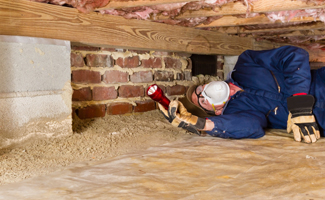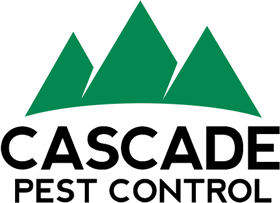Author: Kurt Treftz, Cascade Pest Control
 Termites cause billions of dollars in structural damage each year across the United States, and they are a significant problem for us locally in the Seattle area. The best tool for termite control is prevention, because making it more difficult for termites to establish a colony in your home can save substantial money – and headaches – in the long run. Termite treatment is an option if a colony has already been established, but knowing how to protect your home from termites can help you keep things from ever reaching that point.
Termites cause billions of dollars in structural damage each year across the United States, and they are a significant problem for us locally in the Seattle area. The best tool for termite control is prevention, because making it more difficult for termites to establish a colony in your home can save substantial money – and headaches – in the long run. Termite treatment is an option if a colony has already been established, but knowing how to protect your home from termites can help you keep things from ever reaching that point.
Tips for Termite Prevention in the Seattle Area
Damp-wood termites and subterranean termites are the types most commonly found in the Seattle/Puget Sound area. Both require significant sources of moisture and food to survive, so damaged wood is especially attractive for local termites. Each type of termite has very different habits, so a comprehensive approach is required for termite prevention.
- Eliminate Food Sources around the Home – Damp wood around your home can provide termites with a source of food and shelter before they enter your home. Store firewood away from the home, avoiding using mulch directly against structures, and be sure that old stumps/fallen trees are removed promptly. Make sure that wood fences and decking are well-maintained, and inspected regularly by a termite pest control expert.
- Signs of Subterranean Termites – Subterranean termites live underground, and create mud tunnels to reach the structure of your home. This light brown tunnels, about the width of a pencil, are a sure sign of termite activity. Make sure that any wood stored around the home is kept off of the ground, and keep an eye out for mud tunnels in areas with moist wood.
- Keep Your Structure Safe – Subterranean termites prefer to seek out sources of wood that contact directly with the soil, and will use exposed wood as an entry point to reach other parts of the home. Make sure that there is always at least an 18-inch gap between the soil and any exposed wood that is part of your home’s structure.
- Stop Sources of Moisture – Damp-wood termites will build colonies in any part of the home with moist, damaged wood, so stopping sources of moisture is an important step in termite prevention. Make sure that roof leaks are promptly fixed, and any damaged wood is repaired. Check that your gutters are clean, and in good shape. Keep an eye out for dripping pipes, including in attics, crawlspaces, and other hard-to-reach places.
- Termite Treatment – A liquid termiticide treatment can both kill termites that come in contact with it, and create a barrier around your home to help keep termites away. Your termite control expert can help you choose the right treatment to protect your home.
- Termite Inspection – Taking steps to prevent termites can help lower your risk of infestation, but there’s no way to eliminate the risk entirely. An annual termite inspection from a termite pest control expert is crucial for catching termite infestations, and the signs of an infestation are often very difficult to spot without a trained eye. A termite inspection is the best way to get the peace of mind that your home is protected.
Professional Termite Prevention Treatments
Whether you’ve dealt with termite problems in the past or simply want to be proactive to prevent problems in the future, there are steps you can take today to prevent a termite infestation. Our experienced Cascade Pest Control technicians can help you with termite prevention, termite inspections, and termite extermination in the Seattle/Puget Sound area.
The Cascade Preventative Termite Treatment will protect your home from termites and will help you keep them from ever becoming a problem.
